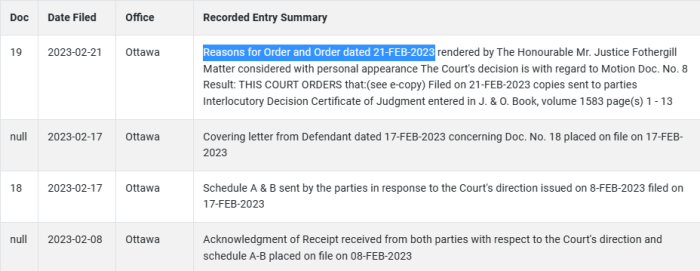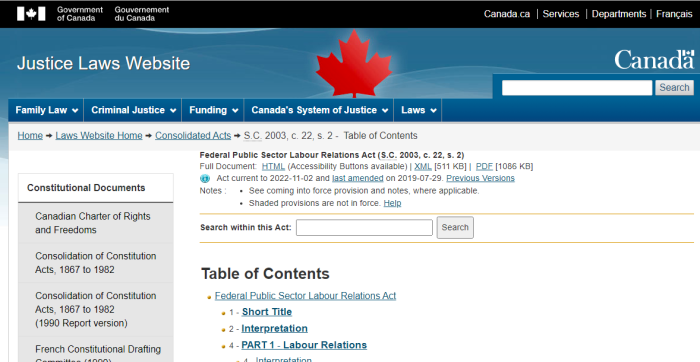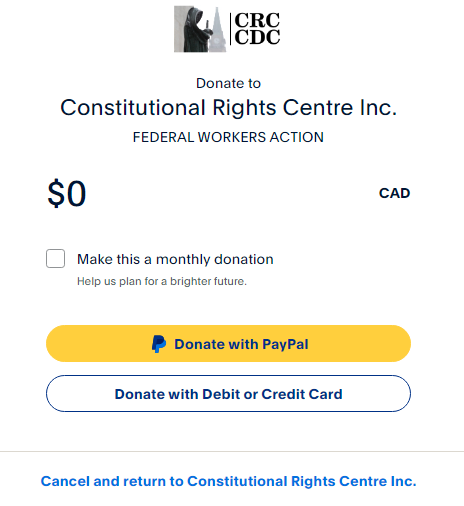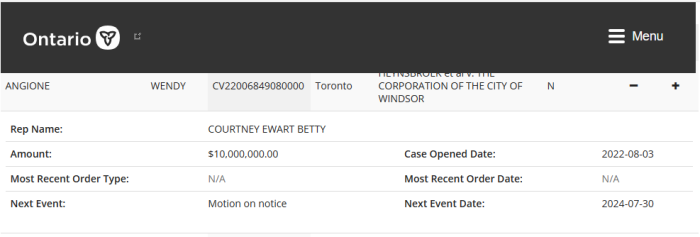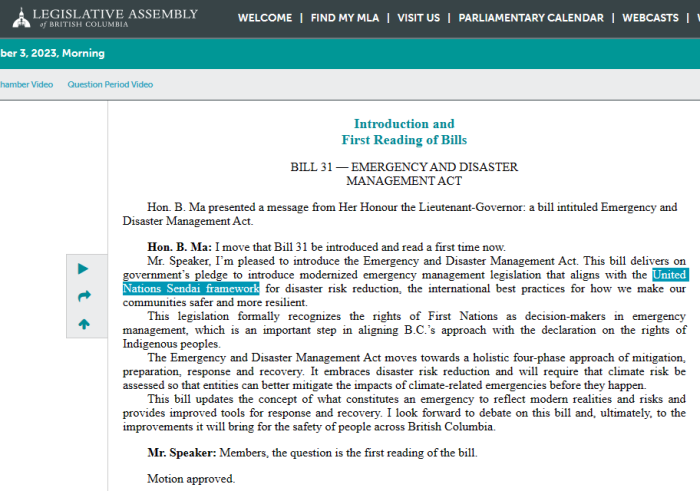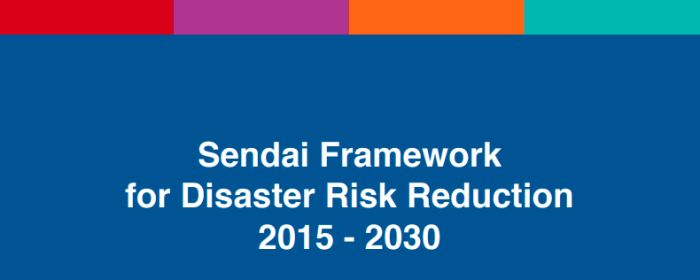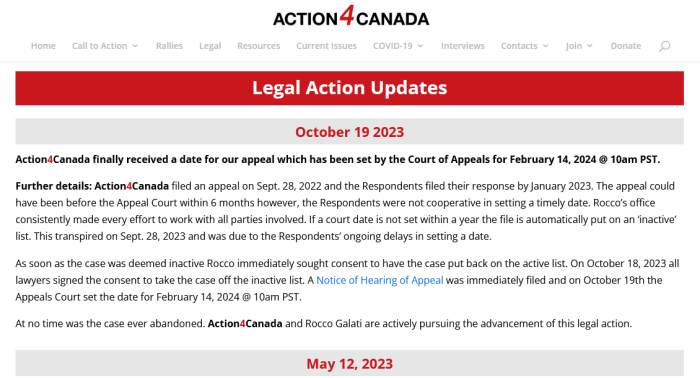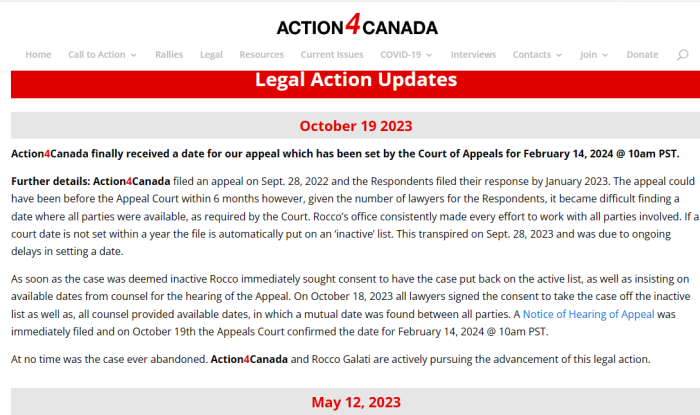
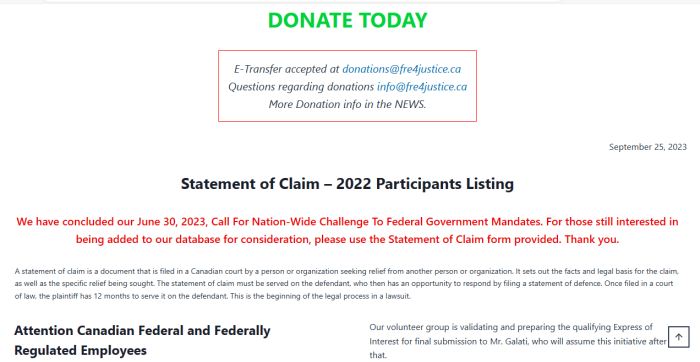
This recently came to my attention: there’s an effort to recruit some 600 Plaintiffs (Federal employees and employees of Federally regulated industries) for a lawsuit over vaccine injuries. There’s to be a massive filing over the injuries they’ve received over the coerced injections.
This group is apparently called the “Federal and Federally Regulated Employees for Justice”, and claims to be made up of volunteers.
If this sounds familiar, it is. It’s a virtual copy of this mess filed back in May 2022. It listed over 600 Plaintiffs who lost their jobs over injection passports. Here’s the Retainer Agreement that clients were asked to sign.
Now, this iteration will be a lawsuit for workers who took the shots and were injured in some capacity.
It’s to be conducted by “Mr. Bad Beyond Argument” himself. This is the Toronto lawyer who lost the last Federal case in February 2023, and Action4Canada in August 2022 because they were so incoherently and unintelligibly written.
As with the last suit, this has 2 groups of people:
(a) Employees and former employees of the Federal Government
(b) Employees and former employees of Federally regulated industries
There is a difference between the 2, and that will become obvious later.
The website goes on to explain that $600,000 in total will be sought, and that the amount individual clients pay will be dependent on how many there are to begin with. More clients means less individual costs, which isn’t a bad thing by itself.
Legal Costs: Total retainer fee is about $600,000, which will be divisible by the number of signed Plaintiffs. As an example, 600 + Plaintiffs @ $1,000 each. If the Plaintiff count should be lower, the retainer fee will be pro rated as an example, 300 + Plaintiffs @ $2,000 each. To put this into perspective, this represents about a year’s supply of a latte at Starbuck’s, each day or your annual vehicle insurance. At this time, please do NOT submit your retainer fee. If there is enough interest then a simple one-page retainer agreement will be forwarded and then the retainer agreement and it’s fee can be submitted at that time. We will provide the details at a later time.
Apparently, the group is soliciting donations in addition to collecting retainer fees. At least that’s what it looks like on the webpage.
Now the issues start to mount.
First major problem: members of the Federal Government typically don’t have the right to sue.
From the Federal Public Sector Labour Relations Act, FPSLRA:
Right of employee
208 (1) Subject to subsections (2) to (7), an employee is entitled to present an individual grievance if he or she feels aggrieved (a) by the interpretation or application, in respect of the employee, of
(i) a provision of a statute or regulation, or of a direction or other instrument made or issued by the employer, that deals with terms and conditions of employment, or
(ii) a provision of a collective agreement or an arbitral award; or
(b) as a result of any occurrence or matter affecting his or her terms and conditions of employment.
No Right of Action
Disputes relating to employment
236(1) The right of an employee to seek redress by way of grievance for any dispute relating to his or her terms or conditions of employment is in lieu of any right of action that the employee may have in relation to any act or omission giving rise to the dispute.
Application
236(2) Subsection (1) applies whether or not the employee avails himself or herself of the right to present a grievance in any particular case and whether or not the grievance could be referred to adjudication.
Section 208 of the FPSLRA gives Federal employees — the Core Public Administration — the right to grieve, and that often ends in arbitration. This is similar to how workers in unionized environments, or ones with collective bargaining agreements. Section 236 is the prohibition on seeking remedies in the Courts via lawsuits. This is referred to as a lack of jurisdiction, or an “explicit ouster” from the Court.
While this group is signing up clients to represent who are “vaccine injured”, members of the Federal Government don’t have the right to sue — for the most part. To get around that, they have to demonstrate that they tried grievance methods, and that the process isn’t workable.
See this review for input on how the last Federal case should have been drafted.
Second major problem: Why wasn’t Compensation Program at least consulted?
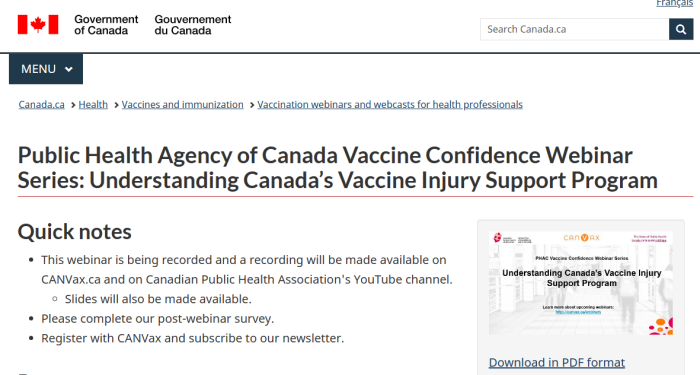
The issue of being compensated for vaccine injuries carries another complication: there’s already a program in place from Ottawa to help victims.
Certainly, one can debate the merits of such a program. And clearly, it was enacted to convince more people to take the experimental injections. However, since Federal workers don’t automatically have access to the Courts, Plaintiffs may be asked about this. Even the Federally regulated workers can have that come up.
Would litigants be denied their day in Court because this already exists? Maybe not, but anything is possible, especially when none of them have even explored the option. Remember the last point: Federal workers need to convince the Court that suing was their only available recourse.
Third major problem: Galati has ALREADY lost on issue of jurisdiction
This proposed lawsuit retreads grounds that the last case already decided. Paragraphs 10-36 of the Decision outlined why employees of the Federal Government don’t normally have the right to sue.
This won’t (directly) impact workers of Federally regulated industries, but there’s still the problem of their respective employers being an intermediate party.
That was appealed, and the hearing was on November 8th, 2023. The Federal Court of Appeal will most likely dismiss it. This means that this proposed suit will already be a lost cause.
This “vaccine injuries” lawsuit is run by the same people who put together the last challenge, so there’s no way they don’t know about this.
Fourth major problem: Rules of Civil Procedure aren’t followed drafting documents

This dead horse has been beaten enough already. See critiques for
(a) Vaccine Choice Canada
(b) Action4Canada
(c) Federal injection pass case — from this group
These cases are all within the last few years. If recent history is any indication, then this proposed lawsuit will be written just as poorly. It’s embarrassing that lawyers can practice for decades without being able to form coherent sentences. Expect a Motion to Strike, followed by another “bad beyond argument” ruling.
Fifth major problem: more money to be demanded, it’s a guarantee
Once this new lawsuit is thrown out, it’s very likely that more money will be sought in order to pay for the Appeals. This is exactly what happened with this group’s other Federal case.
This email was leaked from angry and disillusioned clients, and eventually made its way here.
Hello everyone,
Some of you have already heard but for those who haven’t, the Judge has rendered his decision in the Government’s motion to strike our claim. In a somewhat anticipated move, the claim was struck for 2/3 of the plaintiffs and remains open for 1/3 to amend the claim and resubmit. There is a letter attached from Rocco himself that goes into greater detail about the decision. Needless to say, the decision was an absolute pile of rubbish and the Panel has decided to appeal the decision.
Now, as you will read in Rocco’s attached letter, there are additional fees associated with launching the appeal. The additional fees are minimal in comparison to the initial retainer but an explanation is required.
As Rocco’s letter will clarify, the retainer fee was to cover all that was required to see this matter through a trial in the Federal Court. Now that an appeal is required, it is required to go through the Federal Court of Appeals and that alone will cost in excess of $100,000. Rocco budgeted the retainer fee on doing everything to see a trial through the Federal Court which did not include appeals.
We feel it necessary at this juncture to apologize to each and every one of you. We misinterpreted the finer details of what the retainer fee covered due, no doubt, to our limited knowledge about how the civil court process works and a misunderstanding of the information Rocco provided to us. Some of you asked specifically what all would be covered with the retainer fee and were informed it would cover this entire matter all the way through no matter what action was required and for this, we apologize.
We wish to reinforce with you that this was not done out of an attempt to deceive or act maliciously. We are going to be out the same amount as anyone else who desires to proceed and be a part of the appeal.
To avoid repeating the same confusion, the panel asked Rocco to outline the cost implications for every step and all the way to the Supreme Court which Rocco now outlined in his letter. We hope this will better serve all of us and it is also our hopes that you will see this effort by the panel as a way to remain fully transparent on what transpired but also on what to expect going forward. We too, do not want to see other surprises but more importantly, we do agree with Rocco that we have a strong position for an appeal. We ultimately hope for our day in Court but sadly, we did not have our day in Court here as our lawsuit was wrongly struck down as evidently explained in Rocco’s letter.
We are planning to host another info session with Rocco via Zoom within the next few weeks to answer questions you may have and to provide more information regarding how the appeal process will work. We are not going to attempt to solicit any money from anyone prior to this information session. Our intent is to allow you to consider whether each of you as individuals wish to proceed from this point.
We understand many of you will have questions. We will do our best to answer them or have Rocco address them in the upcoming info session.
We have also attached a link to the decision on the Federal Court website.
Sincerely and most humbly,
The Federal Employee Lawsuit Panel
https://decisions.fct-cf.gc.ca/fc-cf/decisions/en/item/522970/index.do
Expect more of the same to happen here.


The group also appears to encourage clients to engage in abuse of process by filing multiple, interrelated lawsuits separately, and against different people.
As a point of clarification, you can participate in several similar legal proceedings against another party, as long as each prosecution focuses on a different case. For example, in the case of vaccination mandates, you may file legal proceedings against your employer for liability and compensation for irregularities and employment-related offences. You may also participate in legal proceedings against the federal government for constitutional and Charter violations that have infringed on your freedom and rights.
It’s unclear why such advice would be given. Even assuming good intentions, it’s a blueprint to have a case delayed, and possibly thrown out. The Courts (understandably) don’t want overlapping lawsuits, as it forces Judges to compete with each other in their rulings.
Now, it’s entirely possible that this new case is legitimate and that it will be diligently pursued. However, given how things have been recently, it seems unlikely. People are welcome to pay into this if they want, but need to be aware that this case will never get to Trial.
In fact, it won’t even survive a Motion to Strike.
FROM THE WEBSITE
(A.1) https://fre4justice.ca/
(A.2) https://web.archive.org/web/20231111011348/https://fre4justice.ca/
(A.3) fre4justice Main Page
(B.1) https://fre4justice.ca/#section-1
(B.2) https://web.archive.org/web/20231111011348/https://fre4justice.ca/
(B.3) fre4justice About Us
(C.1) https://fre4justice.ca/#section-2
(C.2) https://web.archive.org/web/20231111011348/https://fre4justice.ca/
(C.3) fre4justice Expression Of Interest
FEDERAL VAXX PASS CHALLENGE (APPEAL)
(1) FCA Adelberg V. HMTK A-67-23 Notice Of Appeal
(2) FCA Adelberg V. HMTK A-67-23 Appeal Book
(3) FCA Adelberg V. HMTK A-67-23 Appellants MFL
(4) FCA Adelberg V. HMTK A-67-23 Respondents MFL
FEDERAL VAXX PASS CHALLENGE
(1) https://policeonguard.ca/wp-content/uploads/2022/06/Filed-SOC.pdf
(2) Federal Court Vaccine Mandate Challenge
(3) Federal Vaccine Passport Challenge Retainer Agreement
(4) Federal Court Vaccine Mandate Challenge Motion To Strike
(5) Federal Court Vaccine Mandate Challenge Affidavit Of Service
(6) Federal Court Vaccine Mandate Challenge Responding Motion Record
(7) Federal Court Of Canada Rules
(8) Federal Court Decision On Motion To Strike (Archive)
(9) https://decisions.fct-cf.gc.ca/fc-cf/decisions/en/item/522970/index.do
(10) https://www.canlii.org/en/bc/bcsc/doc/2022/2022bcsc1507/2022bcsc1507.html
(11) https://laws-lois.justice.gc.ca/eng/regulations/sor-98-106/page-9.html#h-1013947
(12) https://www.laws-lois.justice.gc.ca/eng/acts/P-33.3/page-13.html#h-406405
PRECEDENTS CREATED
(1) https://www.canlii.org/en/ca/fct/doc/2023/2023fc280/2023fc280.html#par85
(2) https://www.canlii.org/en/ca/fct/doc/2023/2023fc929/2023fc929.html#par17
(3) https://www.canlii.org/en/bc/bcsc/doc/2023/2023bcsc1701/2023bcsc1701.html#par30
MONEY
(1) Letter to Federal Worker Plaintiffs
(2) Federal Workers Action Donation Link For PayPal
(3) Ontario First Responders Action Donation Link For PayPal
(4) School Action Donation Link For PayPal
(5) Police Officer Action Donation Link For PayPal
(6) https://www.web.archive.org/web/20220526170932/https://www.constitutionalrightscentre.ca/
(7) Federal Workers Retainer Agreement
(8) Ontario First Responders Retainer Agreement
(9) Donate To Public Citizens Inquiry
(10) Donations For Supposed B.C. Doctors Action

